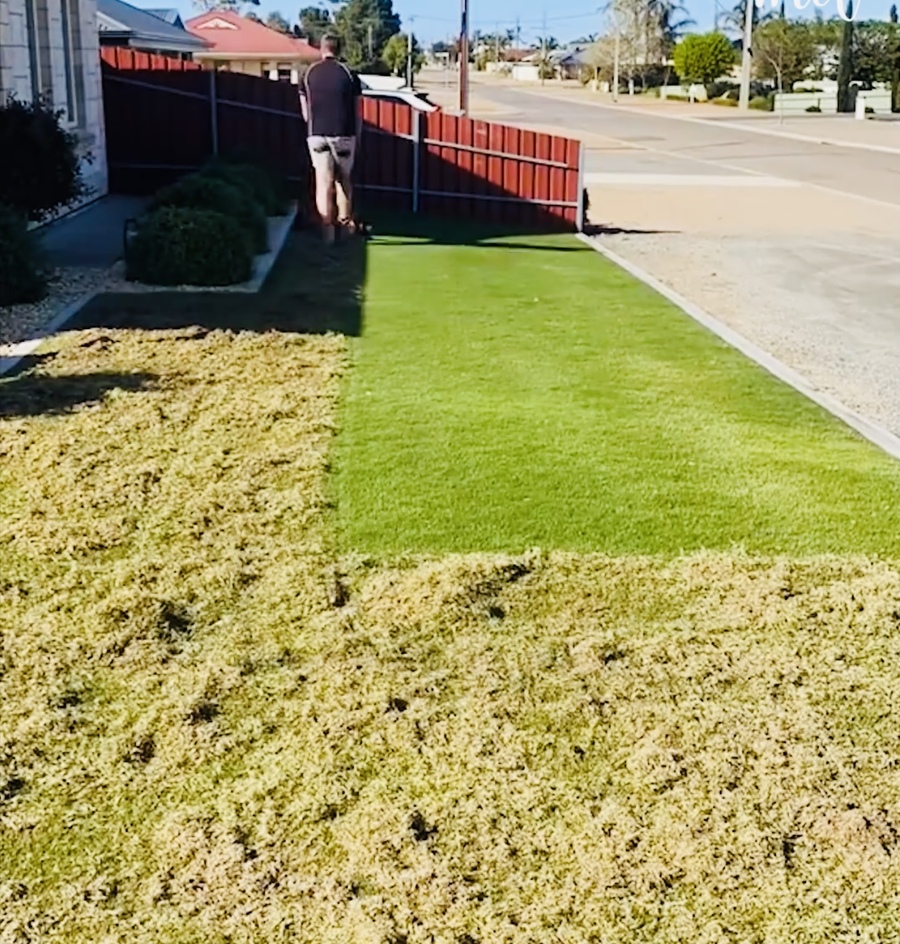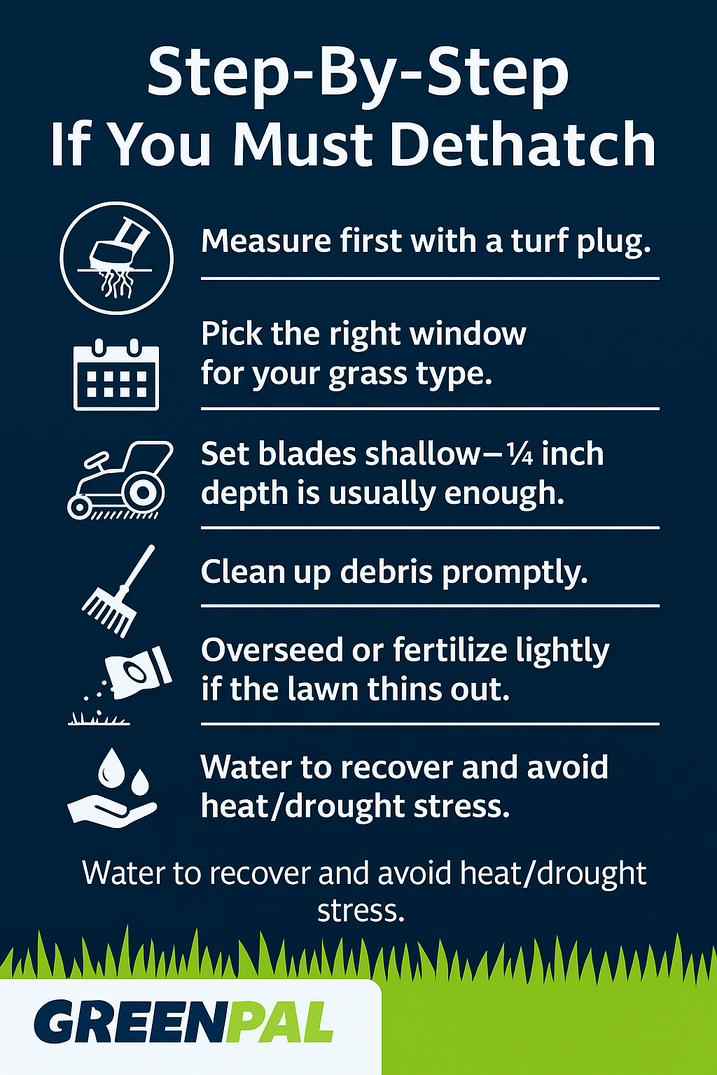Is Dethatching Your Lawn Worth the Trouble?
Dethatching is one of those lawn care tasks that sounds like it has to get done every season, but most homeowners don’t need it nearly as often as they think. Thatch, the spongy layer of roots and stems between soil and grass blades, only becomes a problem once it’s thicker than about half an inch.
In many cases, core aeration is a safer and more effective option, and sometimes adjusting how you water or fertilize is enough to keep your yard healthy. If you’re looking for broader seasonal upkeep tips beyond dethatching, check out our seasonal lawn care guide.
Whether dethatching is worth the trouble depends on your grass type, your region, and what’s happening under the surface. This guide will help you decide and walk you through what to do if it’s truly needed.
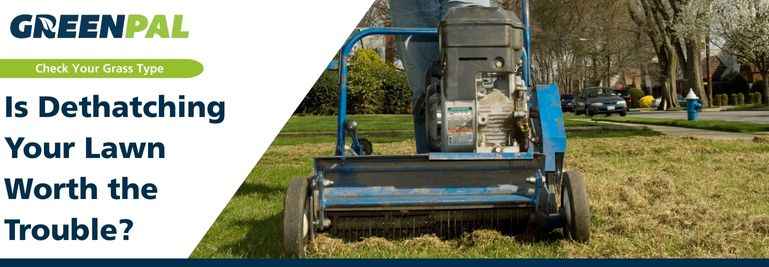
Quick Answers About Dethatching Your Lawn
When it’s worth it: Only if your plug shows more than ½ inch of thatch.
When to skip it: Most tall fescue, ryegrass, and St. Augustine lawns never need it. Aeration is usually safer.
One-minute test: Cut a small wedge of turf. If the brown, spongy layer under the green shoots is thicker than ½ inch, dethatching may help. Otherwise, leave it alone.
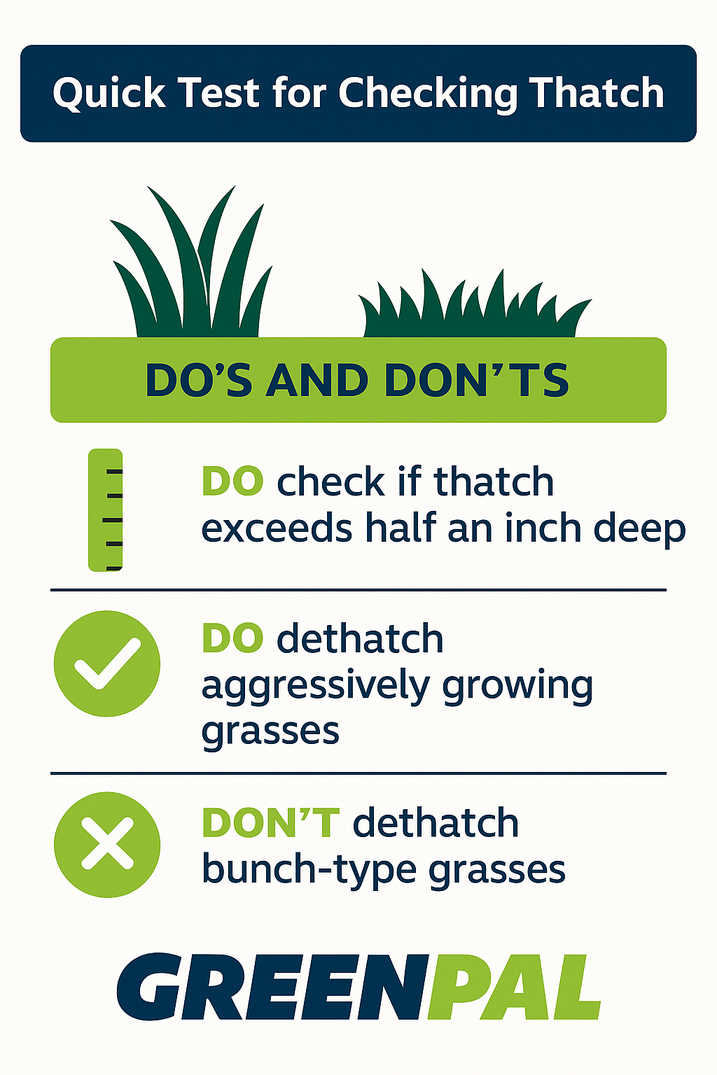
What Dethatching Is (and is it worth it)
Thatch is not grass clippings. It is a dense layer of stems, roots, and crowns between the soil and the green shoots. Penn State Extension explains that clippings decompose quickly and do not create thatch. Problems start when the layer is thicker than ⅓–½ inch, because it blocks water, nutrients, and air from reaching the roots.
So, is it worth dethatching? Only if you measure more than that threshold. OSU Extension notes that cool-season grasses like Kentucky bluegrass, rye, and fescue should stay under ⅓–½ inch, while warm-season grasses like bermuda, zoysia, and St. Augustine can tolerate up to ½ inch. If your plug shows less, aeration or improved lawn care practices are safer and more effective.
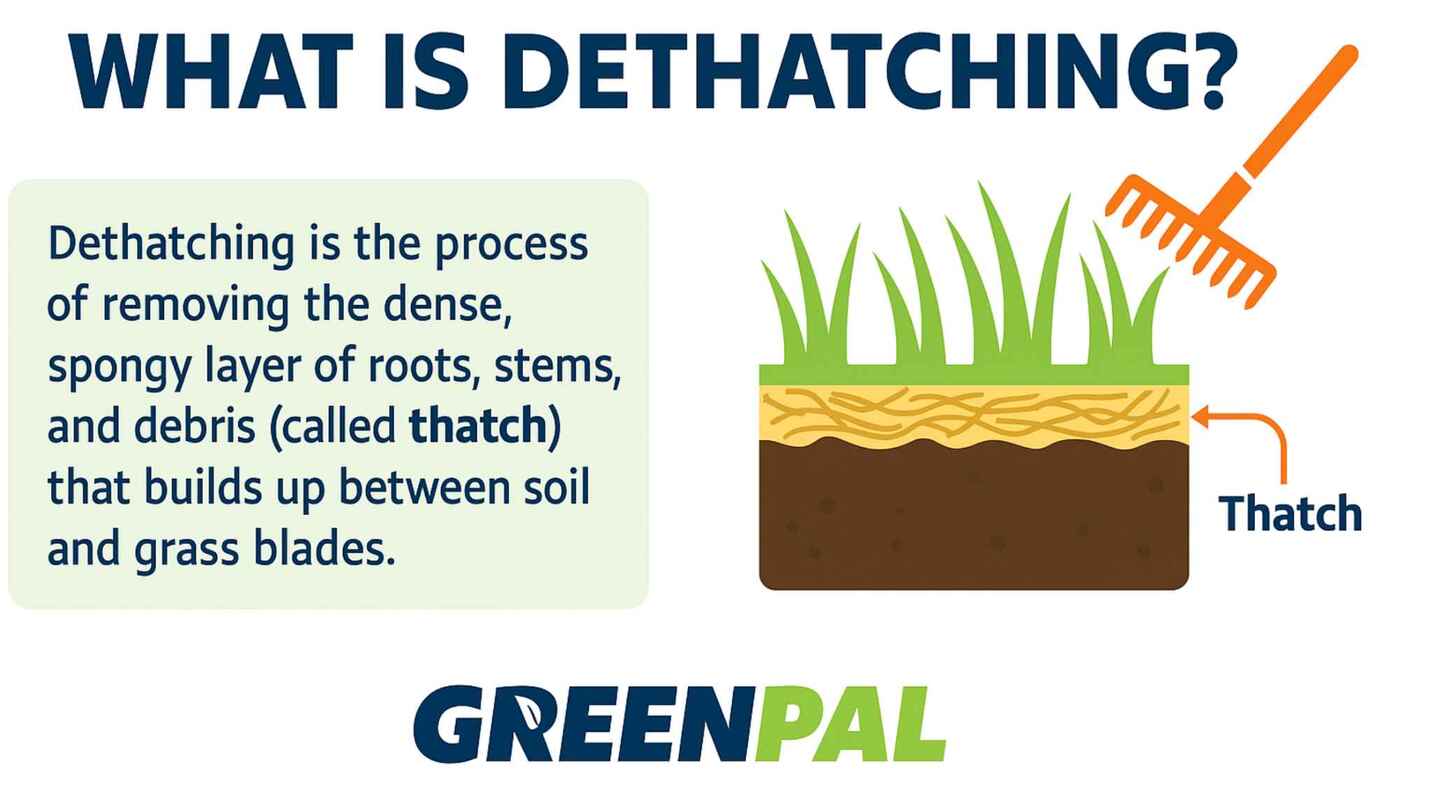
What Homeowners and Pros Say
On lawn care forums, skepticism about dethatching is widespread. As with many lawn care-related topics, there are mixed opinions, but the majority believe that dethatching is not worth the time or the money. Here are some quotes we found across various websites related to dethatching.
“Most folks who dethatch in northern settings are doing it unnecessarily… With your tri-mix lawn, I doubt you even have thatch.”
“9 out of 10 people who post about dethatching probably didn’t need to do it.”
“Dethatching is rarely necessary.”
Several people mentioned dethatching was useful before overseeding: “I’ve had better results from dethatching to get more seed-to-soil contact.”
And then there’s the reality of time and cost: one Reddit user estimated 11 hours for 7,000 square feet, while 2025 service quotes ranged from $65 to $165, depending on lawn size and market.
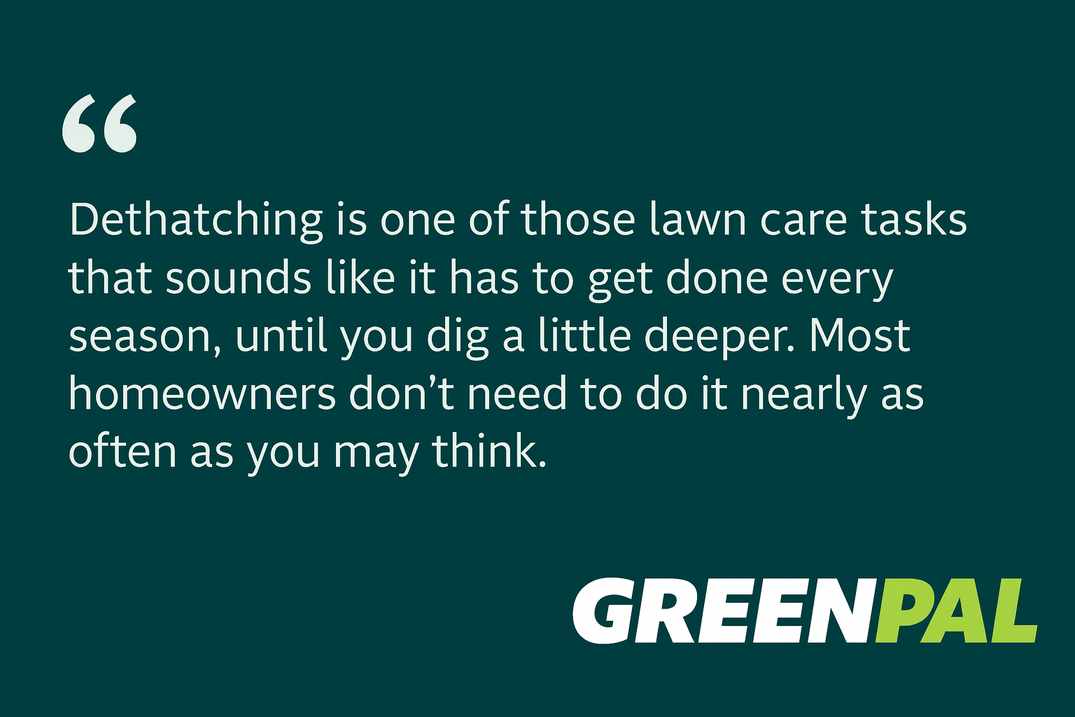
Science-Based Guidance
Scientists from Penn State Extension and OSU Extension keep it very simple: Don’t dethatch just because it’s spring. Only do it when thatch exceeds ½ inch.
Cool-season grasses: late summer into early fall.
Warm-season grasses: late spring into early summer after full green-up.
Aeration vs. Dethatching: Core aeration often achieves the same results with less damage. It improves root growth and speeds natural thatch breakdown. Curious if aeration is a better fit for your yard? Our aeration vs. dethatching guide explains the differences.
Thatch prevention: Over-fertilization, excessive watering, and certain pesticides accelerate thatch buildup. Adjust cultural practices before you rent a machine.
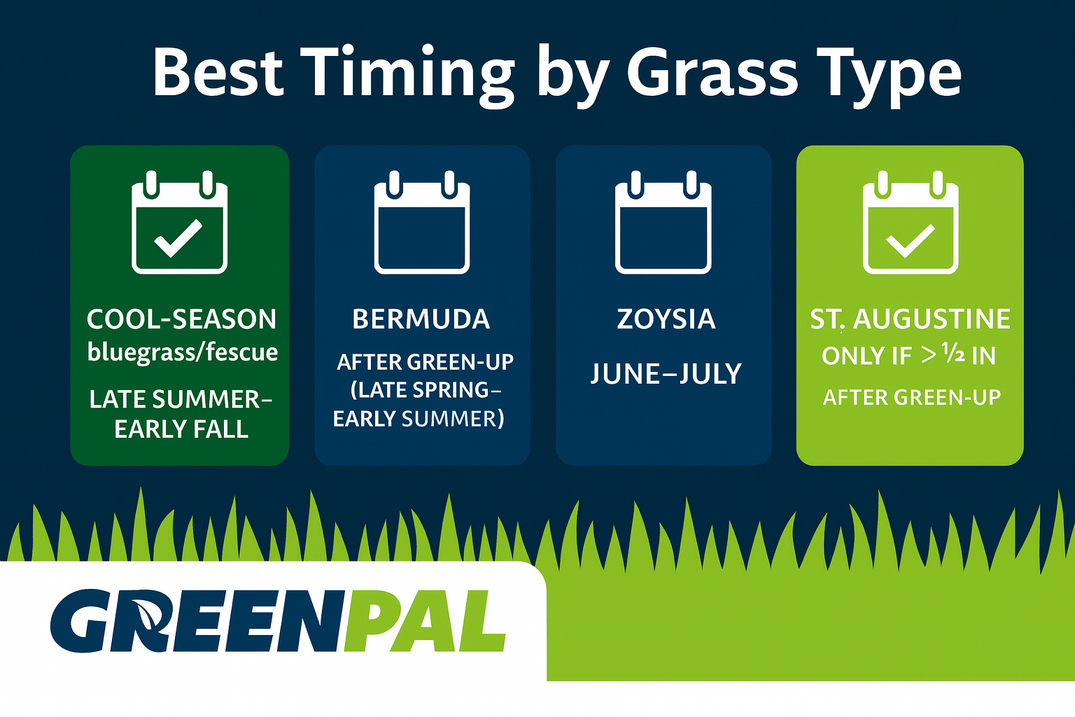
Regional Playbooks for Dethatching
While the ½-inch rule applies everywhere, the best time to dethatch depends heavily on your climate and grass type. Cool-season lawns in northern regions recover best in late summer and early fall, while warm-season grasses in the South and Southwest need to be handled after spring green-up.
Coastal areas like Florida and the Pacific Northwest have their own quirks. St. Augustine is especially sensitive, and fescue/rye lawns in rainy climates often don’t need mechanical dethatching at all.
That’s why it’s important to use a region-by-region playbook instead of following generic advice.
Live in Florida? Start with Tampa lawn care. In the Midwest, see Chicago lawn care for cool-season timing.
| Region | Common Grasses | Best Practice |
|---|---|---|
| Upper Midwest & Northeast | Kentucky bluegrass, fescue | Dethatch late Aug–Sept if needed; pair with overseeding. Otherwise aerate. |
| Transition Zone (Carolinas, Mid-Atlantic) | Mixed lawns (Bermuda, zoysia, cool-season) | Test plugs. Dethatch Bermuda/zoysia after green-up; aerate cool-season areas in late summer. |
| Southeast & Gulf Coast | St. Augustine, zoysia, Bermuda | St. Augustine: only with wide 2–3 in. spacing, ~¼ in. depth after green-up. Zoysia: periodic vertical mow. Bermuda: scalp + aeration often enough. |
| Texas & Southwest | Bermuda, St. Augustine | Bermuda: verticut late spring–early summer. St. Augustine: shallow, single pass only if >½ in. thatch. |
| Pacific Northwest | Rye, tall fescue | Rarely need dethatch. Focus on moss cleanup or light rake before overseeding; aeration preferred. |
Grass-Specific Do’s and Don’ts
In addition to considering the region you live in, it's also important to check your grass type. If you have grass like ryegrass or tall fescue, chances are a light raking is a better fit than a full dethatching.
St. Augustine: Avoid power rakes. If >½ inch thatch, shallow, wide-spaced pass after green-up. Otherwise, aerate.
Bermuda: Verticut only if truly excessive thatch. Many homeowners scalp and aerate instead.
Zoysia: Periodic vertical mowing during active growth helps control thatch.
Tall fescue/ryegrass: Rarely needs dethatching; rake lightly before overseeding,
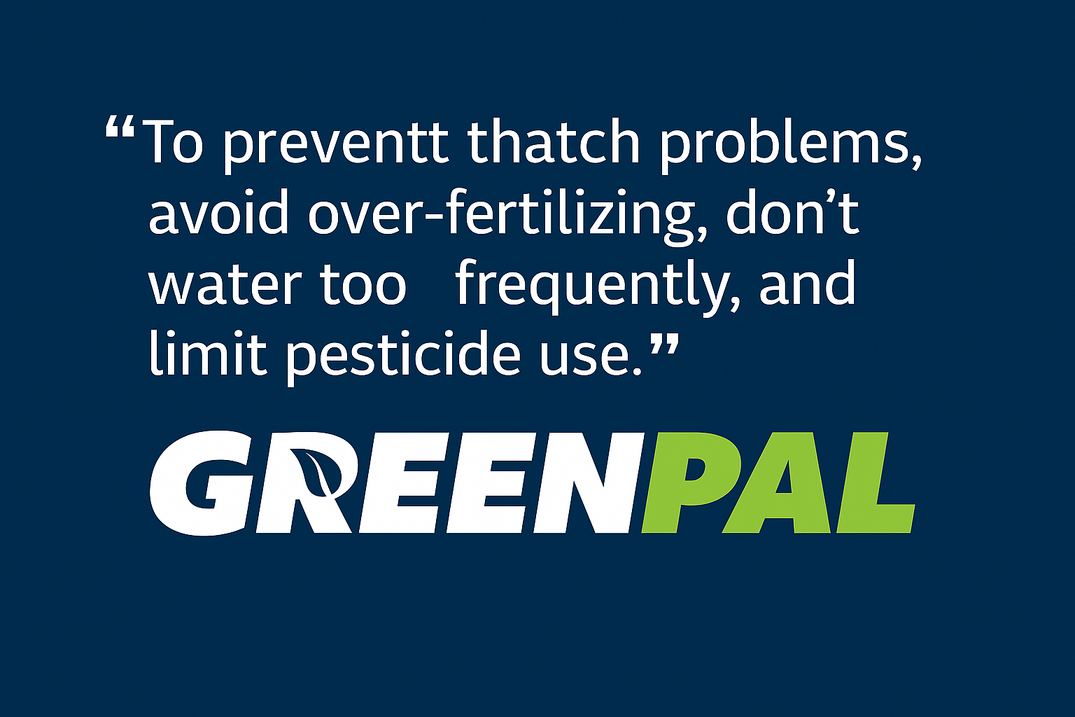
Step-By-Step If You Must Dethatch
If you've determined that, based on your region and the grass type you have currently, you should detach as part of your landscaping maintenance, these are the general steps to take. If you don't have the right equipment or the time to complete this process, consider contacting GreenPal. You'll be matched with local providers, receive project quotes, and have your detachment done quickly and professionally (with the proper equipment).
Measure first with a turf plug.
Pick the right window for your grass type.
Set blades shallow—¼ inch depth is usually enough.
Clean up debris promptly.
Overseed or fertilize lightly if the lawn thins out.
Water to recover and avoid heat/drought stress.
Dethatching Mistakes to Avoid
If you are completing the dethatching process on your own, make sure to avoid any of these mistakes:
Dethatching during hot, dry spells.
Using spring-tine reels on stolon grasses like St. Augustine.
Confusing dead surface blades with true thatch.
Breaking a pre-emergent herbicide barrier too soon.
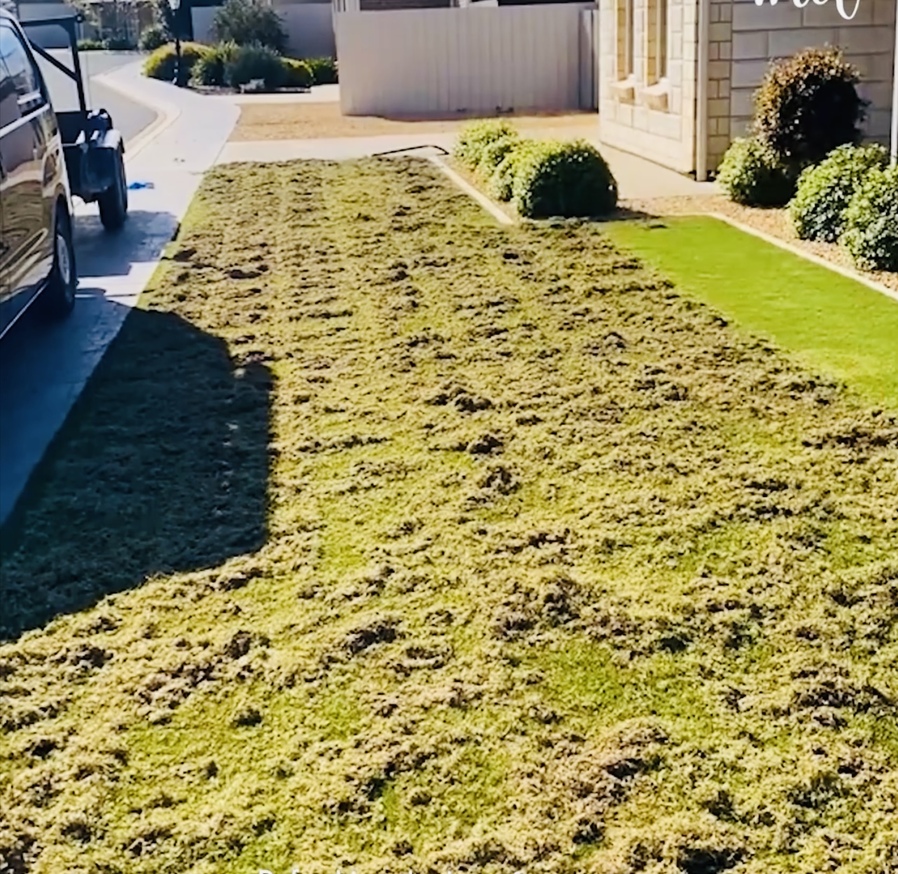
Bottom Line: Should I Dethatch My Lawn?
Dethatching isn’t a standard once-a-year chore. Extension experts and pros agree: don’t dethatch by default. Measure thatch, time the work to peak growth, and consider aeration first. Treat sensitive grasses like St. Augustine with extra care. Done right, dethatching can help. If it's done wrong, it will set your lawn back. Contact GreenPal to get quotes on dethatching or to have a professional analyze if dethatching would help your grass.





 Share
Share




